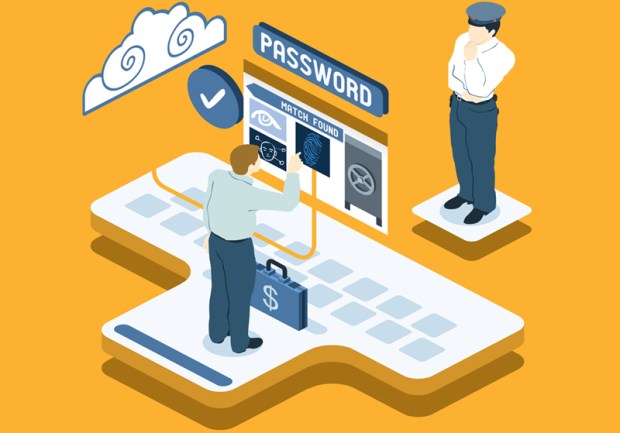How MasterCard Is Taking Biometrics To The Masses

It’s been a little over a week since The White House Cybersecurity Summit, during which U.S. President Barack Obama called upon tech and financial companies to band together to protect consumers from cyber attacks. Among initiatives highlighted during the Summit was MasterCard’s $20 million investment in cybersecurity, which includes its Safety Net program to reduce large-scale cyberattacks and a new biometrics program to rollout later this year. PYMNTS spoke with MasterCard’s Cheryl Guerin, EVP and Group Head, Global Products & Solutions, U.S. to get the details on how MasterCard aims to take biometrics mainstream, how the company’s $20 million cybersecurity plan will further technologies already in the market, and what’s next in consumer protection – post-Summit and beyond.
“It’s one of the great paradoxes of our time that the very technologies that empower us to do great good can also be used to undermine us and inflict great harm.”
Those were the words of U.S. President Barack Obama during his speech at The White House Cybersecurity Summit a little over a week ago. To fight this paradox, Obama called upon the tech and financial companies to collaborate in a joint effort to provide consumer protection from cyberattacks. Summit attendee Dan Berger, president and CEO of the National Association of Federal Credit Unions, told PYMNTS that the collaboration across all sectors was a key takeaway.
“As leaders, we must make sure all the stakeholders in the payment ecosystem are investing and implementing similar culture and technologies,” said Berger. “Until there is a national standard to hold retailers and merchants accountable, massive data breaches will continue to occur.”
Panelists who spoke on new technologies for cybersecurity during the Summit included MasterCard’s CEO Ajay Banga, who described the combined needs of encryption, authentication and secure payments. At the same time, he stressed the need to keep the user experience as frictionless as possible.
As part of a pre-Summit release, The White House highlighted specific security initiatives made by the industry since October 2014. Among the initiatives was MasterCard’s plan to make a $20 million investment in cybersecurity tools, which include its new cybersecurity solution Safety Net, which is aimed at reducing large-scale cyberattacks. The White House also listed MasterCard’s partnership with First Tech Credit Union to launch a biometrics pilot program later this year, allowing consumers to authenticate and verify transactions using unique biometrics like facial and voice recognition.
PYMNTS spoke with MasterCard’s Cheryl Guerin, EVP and Group Head, Global Products & Solutions, U.S. to get the details on how MasterCard aims to take biometrics mainstream, how the company’s $20 million cybersecurity plan will further technologies already in the market, and what’s next in consumer protection – post-Summit and beyond.
MasterCard has recently announced plans to invest more than $20 million in cybersecurity. What technologies are you investing in and why?
CG: Digital technologies promise “easy and intuitive” payments but security is at the heart of everything we do at MasterCard. We are creating and investing in multiple layers of cybersecurity, some operate behind the scenes and some are visible to consumers.
Most recently, we announced the U.S. rollout of MasterCard Safety Net, a solution that provides an independent layer of security that only intervenes if a bank’s tools and policies are compromised during a cyberattack. Safety Net monitors and blocks specific transactions and fraudulent activities.
In addition, we announced a biometrics pilot program with First Tech Federal Credit Union that, later this year, will enable consumers to authenticate and verify transactions using a combination of facial and voice recognition and fingerprint matching.
Our new cyber initiatives further technologies already in market, including chip cards being rolled out in the U.S. to secure in store shopping and tokenization and cryptograms which, respectively, identify individual devices, such as phones, and generate unique codes for purchases, better protecting online and mobile payments.
It’s the continual investment in multiple layers of new technologies that keep all of us safer.
MasterCard seems to be relying heavily on biometrics, you have developed a biometrics credit card for example and have a few trials in the market. What impact do you think biometrics will play in the future of payments?
CG: Biometrics are significant in the future of payments. They can help combat lost or stolen card fraud as the combinations of voice and facial recognition with fingermarks prove the identity of the cardholder.
To bring biometric authentication to the mainstream, MasterCard is participating in a number of pilot programs around the world, with more to come.
You are also moving forward with the rollout of chip cards. How does EMV fit in with your overall cybersecurity strategy?
CG: In January 2012, MasterCard committed to securing all channels where we interact with consumers. Our goal is to remove fraud from the U.S. payments ecosystem.
Chip cards protect against counterfeit fraud. The unique codes generated for purchases make consumer data virtually worthless to fraudsters.
The Payment Security Taskforce projects that half of U.S. credit and debit cards will be chip cards and that approximately 47 percent of U.S. payment terminals will be chip-enabled by October of this year.
So what’s next in consumer protection?
CG: We’re helping protect consumers with multiple products and services. U.S. cardholders can benefit from. These include:
Identity Theft Alerts: Rather than pay for an add-on service or worry about tracking individual accounts, MasterCard provides this core benefit to all U.S. cardholders free of charge. Just by signing up, cardholders can receive alerts if their personal information is being bought or sold across their banking, payment card and health care accounts.
Zero Liability: MasterCard was the first payment network to extend its zero liability policy in the U.S. to include credit, debit and ATM transactions made with our branded consumer and small business cards.
Identity Theft Resolution: All MasterCard credit, debit, prepaid and small business cards issued in the U.S. carry Identity Theft Resolution assistance. The program provides help in canceling and replacing missing cards and alerting credit-reporting agencies to the loss.
Tokenization: For an online payment, tokenization replaces 16-digit account number with an alternative number or token with no monetary value. For digital payments, both the device and the purchase are assigned token numbers. Tokens provide an additional layer of security and eliminate the need for merchants, digital wallet operators or others to store account numbers.

Cheryl Guerin
EVP and Group Head, Global Products & Solutions, U.S. at MasterCard
Cheryl Guerin is group executive, Global Products & Solutions for the U.S. Market. In this position, Ms. Guerin is responsible for Products and Solutions Development and Management, Marketing and MasterCard Advisors – the professional services arm of MasterCard Worldwide that offers consulting expertise in the payments industry.
Prior to this role, Ms. Guerin ran U.S. Marketing in which she focused on delivering strategies and programs that drive greater preference for MasterCard’s brand, products and services across B2B and B2C audiences. This included directing the brand’s award-winning Priceless advertising campaign, sponsorships, digital and partner marketing activity to drive greater connection with consumers.
Ms. Guerin joined MasterCard in 2000 and has held positions in Global Promotions and Global Digital Marketing, with a heavy focus on cross-functional integration, issuer value and merchant support. Key achievements include setting best practices and building organizations around these disciplines globally, as well as continued industry accolades.
